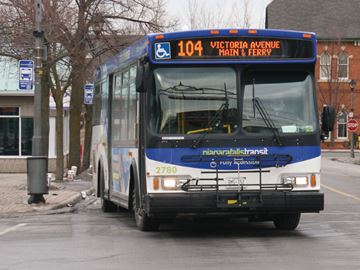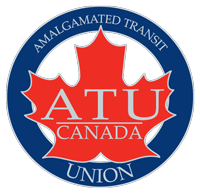Riders and drivers need to have a say, council told

Niagara This Week – Niagara Falls By Richard Hutton
NIAGARA FALLS — Plans to introduce more frequent bus service on some routes in the city travelled a bumpy road, but will still be part of the city’s 2016 operating budget deliberations.
Some members of council, as well as a representative of the union that represents Niagara Falls Transit drivers feel the changes are being made without sufficient input from stakeholders, including drivers and riders.
According to Niagara Falls Transit general manager Dave Stewart, part of the plan includes 15-minute “headways” at peak times along the WEGO Red Line route that runs along the Victoria Avenue-Ferry Street-Lundy’s Lane corridor. The changes are part of a multi-phase plan that began in January 2014. Over the next six years, frequency will be increased to every 30 minutes on routes until 2022, when 100 per cent of transit service features 30-minute headways.
“These are enhancements to make municipal services better and inter-municipal service better,” Stewart said.
But councillor Carolynn Ioannoni said the integration of city routes with the Red Line has been fraught with problems.
“The issue of the Red Line has been problematic,” she said.
She said that residents using the bus to get to work have often been late because of the volume of riders boarding during the peak of the tourism season.
“It’s not working,” she said. “When the bus stops its for two, three, four minutes and there’s a backup.”
The resulting delays mean missed connections and people are late for work, she added.
In addition to increased service on the Red Line, the transit upgrade included a one-year pilot project that would reconfigure the WEGO Purple Line and integrate it with Niagara Falls Transit’s 104 Bus.
At present, the WEGO Purple Line takes passengers directly from the train and bus station on Bridge Street to Table Rock and Queen Victoria Park along River Road. Instead, it would, it would head from the terminal to Queen Street before heading to Clifton Hill along Victoria Avenue. The Green Line would stop at the terminal before heading to Queen Victoria Park and Table Rock.
Stewart said change “would provide an option” for residents and visitors for getting from the station to either Clifton Hill or Queen Victoria Park.
Other routes would see headways decreased from one hour to 30 minutes, including Routes 203 and 206, which service Chippawa and the McLeod Road areas in the city’s south end.
Implementing Phase 2 of the plan would result in $498,000 in increased operating costs, according to a report on the changes. Those costs did not factor in revenue that would be generated by the changes.
Both Stewart and Karl Dren, the city’s director of transportation services, said the proposed changes had been discussed with the drivers’ union, but Margaret Gilbert, president of Local 1582 of the Amalgamated Transit Union, said that simply was not the case.
“We were simply told they (the changes) were happening,” Gilbert said. “Our members want to work in collaboration with the city.”
Cam Crooks, a driver for Niagara Falls Transit, said the drivers simply “want to work for a better system, too.
“They want to look forward to the job every day,” he said.
Dren, meanwhile, said the changes shouldn’t be a surprise to anyone.
“They are the result of work done by the ad hoc transit committee back in 2011,” Dren said. “The issue is a timing issue as it is taking longer.”
Stewart said that he appreciated the input.
“Perhaps more communication is needed about this,” he said.
Coun. Mike Strange spoke out in support of the drivers.
“There’s no one in the city who knows more than the drivers,” he said.
Mayor Jim Diodati cautioned that with the possibility of GO Train service moving closer to reality, the city needs to move ahead with making improvements to transit service.
“It’s (GO service) coming, that’s not a question,” Diodati said. “We are going to need much more transit. The province is watching.”
